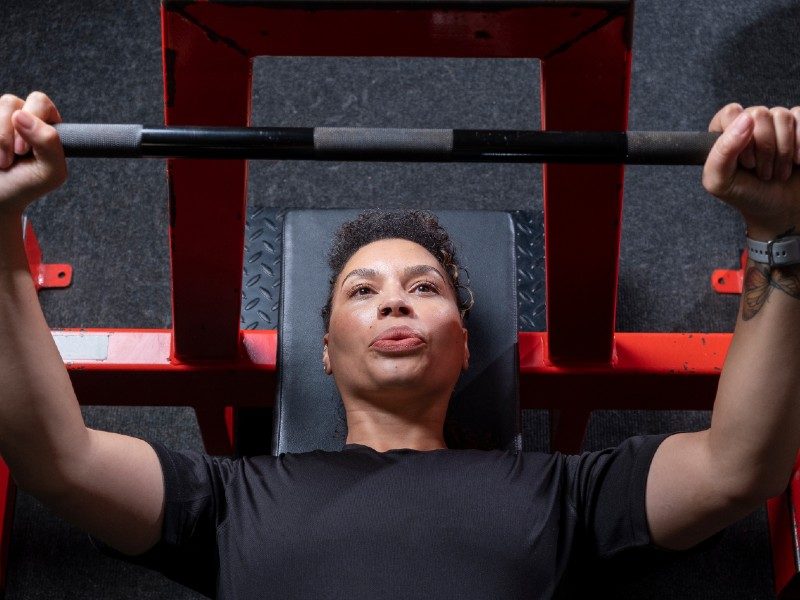Bringing a new life into the world is a remarkable and life changing experience. For many Australian women, after giving birth, the desire to regain their pre-pregnancy fitness levels is strong, and for some, this includes returning to weightlifting. However, the safety and appropriateness of resuming weightlifting after childbirth are essential considerations. In this article we’ll delve into the safety aspects, the effects of lifting heavy weights postpartum, the suitability of squats, and guidelines for a safe return to weightlifting after giving birth.
Is It Safe to Return to Weightlifting After Giving Birth?
The safety of resuming weightlifting after childbirth is a paramount concern for fitness professionals and their clients. The safety largely depends on various factors, including the type of birth, any medical or musculoskeletal concerns during pregnancy, the individual’s pre-pregnancy fitness levels, postpartum recovery, and their overall health.
The Royal Australian and New Zealand College of Obstetricians and Gynaecologists (RANZCOG) recommends that women generally wait until they have their healthcare provider’s clearance (either GP or obstetrician,) usually given at their six weeks postpartum review, before returning to any form of strenuous exercise, including weightlifting. This waiting period allows for the body to recover from the childbirth process and helps reduce the risk of complications. The Australian Physiotherapy Association (APA) recommends waiting six weeks post vaginal delivery, or 12 weeks following a caesarean section before commencing any resistance training.
Fitness professionals should engage in thorough discussions with their clients about their specific birth experiences, any complications that may have arisen, and their overall physical condition before designing a weightlifting program. A personalised and gradual approach is key to ensuring safety. Don’t be afraid to ask questions about any birth trauma or pelvic floor dysfunction. Women may be suffering in silence, too embarrassed to raise the topic or ask questions, but these issues can have a huge impact on their return to exercise.

What Happens When You Lift Heavy Things After Having a Baby?
Understanding the Postpartum Physiological Changes:
After childbirth, a woman’s body undergoes significant physiological changes. These changes include muscle stretching, hormonal fluctuations, and possible abdominal separation (diastasis recti). Lifting heavy weights without proper care and technique can exacerbate these issues and potentially lead to injuries.
Muscle Stretching:
During pregnancy, both the abdominal and pelvic floor muscles experience significant stretching to accommodate the growing foetus. Even if a woman has undergone a c-section delivery, instead of a vaginal birth, the muscles are stretched during pregnancy and the pelvic floor can still be weak. Lifting heavy weights too soon can strain these already stretched and weakened muscles, leading to discomfort, potential injury, and dysfunction.
Hormonal Changes:
Hormonal fluctuations, particularly the hormone relaxin, continue to affect joint stability and ligament laxity for some time after childbirth. This can increase the risk of joint injuries if weightlifting is resumed too early or without proper form and stability.
Abdominal Separation (Diastasis Recti):
Diastasis recti is a condition where the abdominal muscles separate along the midline during pregnancy. It can be common occurrence, and while it usually resolves on its own with time, improper weightlifting techniques can exacerbate this condition, delaying the healing process. The degree of separation varies from a small gap to a larger gap, however, it’s not necessarily the size of the gap that presents an issue but how the abdominal muscles are recruited during functional movements. A woman with a small separation but poor recruitment can present with more symptoms (back pain and a weak core) compared to a woman with a large separation but good functional activation.
To mitigate these risks, fitness professionals should educate their clients about the importance of gradual progression, proper form, and monitoring for any discomfort or pain. Encouraging core-strengthening exercises specifically tailored to postpartum women can help address these concerns.
Is It Safe to Do Squats Postpartum? - Squats and Postpartum Fitness
Squats are a fundamental exercise in most weightlifting routines, and many women (and trainers) wonder whether they are safe to perform postpartum. The answer lies in the timing and technique.
In general, squats can be reintroduced into a postpartum fitness routine, but it’s essential to exercise caution and consider the individual’s circumstances. The depth of the squat and the load lifted should be adjusted according to the client’s comfort and strength levels.
Fitness professionals should emphasise the importance of proper form, especially in maintaining a neutral spine and engaging the core. Bodyweight squats or squats with light resistance can be an excellent starting point for rebuilding strength and confidence. Encourage women to engage their pelvic floor muscles before descending into a squat and they should be able to maintain the contraction until they have returned to standing position. Keep in mind that squatting increases intra-abdominal pressure so make sure the pelvic floor can withstand this. Mini squats or wall-supported squats may be a good preliminary movement to get started.

How to Safely Return to Weightlifting Postpartum: Guidelines for Australian Fitness Professionals
Returning to weightlifting after giving birth should be a gradual process, and personal trainers play a crucial role in ensuring a safe and effective transition. Here are some guidelines for trainers to consider:
Assessment and Consultation: Start with a thorough assessment of the client’s postpartum condition, including any complications during childbirth, fitness level before and during pregnancy, and any lingering discomfort or pain. Consult with healthcare providers, such as obstetricians or physiotherapists, for clearance if you’re concerned.
Core Strengthening: Prioritise core-strengthening exercises, focusing on the transverse abdominis and pelvic floor muscles. Bridges, and gentle pelvic floor exercises can be a great starting point before progressing to modified planks and squats.
Gradual Progression: Begin with low resistance or bodyweight exercises. Gradually increase intensity and weight as the client’s strength and comfort levels improve. Avoid high-impact exercises initially.
Proper Form: Emphasise proper form and technique to minimise the risk of injury. Pay particular attention to maintaining a neutral spine and avoiding overloading the abdominal muscles.
Monitoring and Adjustments: Encourage clients to monitor their bodies for any discomfort, pain, or signs of overexertion. Adjust the exercise program accordingly and promote open communication between clients and healthcare providers.
Nutrition and Hydration: Remind clients of the importance of a balanced diet and adequate hydration to support their postpartum recovery and energy levels for exercise.
Rest and Recovery: Stress the significance of rest and recovery days within the exercise routine. Adequate sleep and relaxation are essential for overall postpartum well-being but remember new parents often aren’t getting quality sleep.

Returning to weightlifting after giving birth can be a safe and effective way for women to regain their strength and fitness. However, it must be approached with caution, care, and an individualised plan tailored to the unique circumstances of each mother. As trusted fitness professionals, understanding the postpartum physiological changes, following RANZCOG and APA guidelines (or other relevant bodies), and prioritising safety and proper technique are imperative. With the right guidance and support, new mothers can achieve their fitness goals while ensuring their well-being and long-term health.
Thanks to Caroline Jones for this article.
Caroline is a physiotherapist who is passionate about using exercise as medicine and getting patients moving, especially those living with chronic conditions.
She is currently undertaking postgraduate research, studying the effects of exercise on women following treatment for gynaecological cancer and consequent lymphoedema. She also holds a Level 3 Certificate in Personal Training, owns a CrossFit box with her husband, and enjoys being a below-average runner.

Let’s Get Physical With Retrosweat Sydney!
Retrosweat, the fun, authentic, 1980s freestyle aerobics classes first started gaining a following in Sydney more than a decade ago and expanded to two locations, offering classes each week. Retrosweat also offer an online library of “at-home” workouts to meet the growing demand for exercise that is both fun and entertaining. What is Retrosweat? Lycra,

Be Mindful in May and Pause for a Cause
What if you could find more focus, clarity, and effectiveness in daily life by learning a 10-minute mindfulness technique and at the same time have a positive impact on the world? Join the Mindful in May movement next month and you can make it happen. What is Mindful in May? Mindful in May is a

Do Protein Supplements Cause Weight Gain?
One of the most common misconceptions in nutrition is that protein supplements contribute to weight gain. We asked Mark Robinson, dietitian and expert for BSc supplements to offer up some advice on the topic and so we can answer the question – do protein supplements cause weight gain? The facts around protein and weight gain

Female Athletes Endorse Athena Sports Nutrition for Women
A new sports nutrition range has just hit our shelves that has been designed specifically to meet the needs of athletic females. Vitaco Health, known for leading sports nutrition brand Musashi, have launched ATHENA Sports Nutrition for women, with several well known Aussie athletes on board as ambassadors to the brand. What is ATHENA Sports

6 Tips for Preparing for Your First Fun Run
Article written by Ben Lucas, Director of Flow Athletic. Preparing for your first fun run can be both exciting and a little daunting. Whether you are brand new to running or simply setting yourself a new challenge in your running journey, preparation is key. Setting a solid foundation with good technique and training is vital

8 Productivity Tips For Procrastinators
As a solo business operator, procrastination can be extremely detrimental. We recently asked a sample of business owners to share their tips to keep it at bay. Here are the top things we identified that help them to be freakishly productive. Enjoy these 8 productivity tips for procrastinators: Productivity tip: Keep the home office tidy

